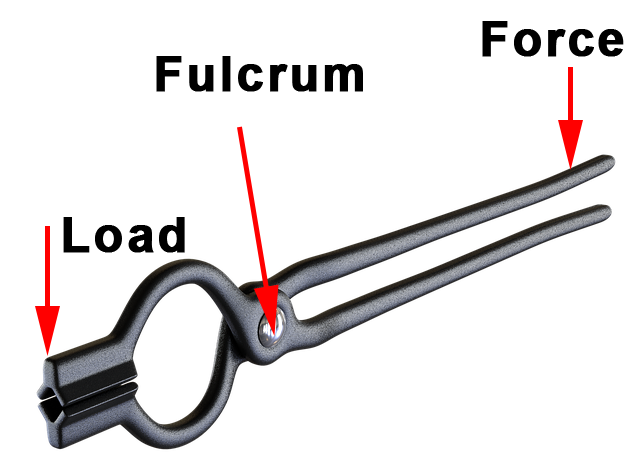A pair of smith's tongs is an example of the lever of
A. Zeroth order
B. First order
C. Second order
D. Third order
Answer: Option B
Solution(By Examveda Team)

First Order Levers: First class levers have the fulcrum between the force and the load. In using a screwdriver to lift the lid from a paint tin you are moving the effort over a greater distance than the load.
Second Order Levers: In second class levers the load is between the effort (force) and the fulcrum. A common example is a wheelbarrow where the effort moves a large distance to lift a heavy load, with the axle and wheel as the fulcrum.
Third-order levers: With third class levers the effort is between the load and the fulcrum, for example in barbecue tongs.
Source : primaryconnections.org.au
Join The Discussion
Comments ( 3 )
The resultant of two equal forces P making an angle $$\theta ,$$ is given by
A. $$2{\text{P}}\sin \frac{\theta }{2}$$
B. $$2{\text{P}}\cos \frac{\theta }{2}$$
C. $$2{\text{P}}\tan \frac{\theta }{2}$$
D. $$2{\text{P}}\cot \frac{\theta }{2}$$
A. Equal to
B. Less than
C. Greater than
D. None of these
If a number of forces are acting at a point, their resultant is given by
A. $${\left( {\sum {\text{V}} } \right)^2} + {\left( {\sum {\text{H}} } \right)^2}$$
B. $$\sqrt {{{\left( {\sum {\text{V}} } \right)}^2} + {{\left( {\sum {\text{H}} } \right)}^2}} $$
C. $${\left( {\sum {\text{V}} } \right)^2} + {\left( {\sum {\text{H}} } \right)^2} + 2\left( {\sum {\text{V}} } \right)\left( {\sum {\text{H}} } \right)$$
D. $$\sqrt {{{\left( {\sum {\text{V}} } \right)}^2} + {{\left( {\sum {\text{H}} } \right)}^2} + 2\left( {\sum {\text{V}} } \right)\left( {\sum {\text{H}} } \right)} $$
A. $${\text{a}} = \frac{\alpha }{{\text{r}}}$$
B. $${\text{a}} = \alpha {\text{r}}$$
C. $${\text{a}} = \frac{{\text{r}}}{\alpha }$$
D. None of these

First order lever means Fulcrum (F) will be located between our input effort (E) and holding load (W). So the scissors and smithy tongs, we can clearly see the Fulcrum in between E and W.
Second order lever means Fulcrum (F) will be at one side and our input effort (E) and holding load (W) are on the other side with input effort (E) is furthest from fulcrum (F).
Third order lever means Fulcrum (F) will be at one side and our input effort (E) and holding load (W) are on the other side with holding load (W) is furthest from fulcrum (F).
ANS - (B). First Order
Ref: https://www.creativemechanisms.com/levers
its fist type , i am sure
How???